Medallion Discovers Versatility, Cost Savings With Altia
The Customer
Medallion Instrumentation Systems, founded by Bill Carpenter and Dick Fletemeyer, began making dashboard gauges for powerboats in 1967. The company has since evolved to become a leading maker of interactive graphical display solutions for products in many industries including marine, motorcycles, powersports, recreation, commercial and safety vehicles, trucks, construction, agriculture and the military.
The Challenge
Display expectations are rising
Creativity has always been a hallmark of Medallion. The company thrives on unusual and unique design challenges, particularly in an era when drivers and operators are accustomed to the highly advanced displays found on today’s automobiles. After the graphical display revolution started, Medallion quickly found that their original GUI design tool was becoming cumbersome. It did not easily support the rapid design iterations required to keep up with the changes occurring in various vehicles and industry segments. Moreover, Medallion was committed to working a specific design environment—a display platform it had chosen, powered by one of the latest, most advanced integrated multimedia application processors. The company’s development paradigm was to create multiple customer applications from this one semiconductor target. With their products being so similar to the embedded displays one might find in a car or truck, Medallion has drawn many of the talented members of their design and technical staff from the automotive world. These professionals are highly experienced; they know what they want from a design tool. In 2014 they began looking for a new and better platform. “Medallion wanted design flexibility,” said Dennis Robinson, Vice President of Global Sales for Altia. “In their quest to optimize HMI for different applications and industries, the company was stretching hardware to capacity. Furthermore, they were looking for industry experience, robust support, and a company with a strong reputation.”
The Solution
An industry-leading toolset
“We went through a pretty long evaluation process as to what our tool chain was going to be,” recalled Jacob VanderWall, Medallion Product Manager. “Many members of our design team were familiar with Altia and wanted to put its products into the mix.” After completing their evaluations, Medallion concluded that Altia would best provide the agility and efficiency it was looking for. The design team went all-in, purchasing Altia Design, Altia DeepScreen and Altia PhotoProto for their staff. Altia Design, Altia’s embedded GUI editor, is the core of its design environment, supporting every step of the design process from prototype to final product. DeepScreen is Altia’s code generator, transforming designs into efficient graphics code for any of dozens of popular processor targets.
According to VanderWall, the positive past experiences his designers and engineers had with Altia from the automotive world played a significant role in the purchase decision. “We were really happy to bring a high-end automotive toolset into our business segment, which is somewhat lower volume – yet maintains the same flexibility and processor efficiency that most of our engineers, who come from automotive, are familiar with,” he said. “The feeling was it would allow us to get the most out the hardware we use.” From the start, Medallion put the full range of Altia capabilities to work including PhotoProto, a tool for converting static graphics into working prototypes. VanderWall noted that PhotoProto removed several tedious steps from the development process. “Some of our larger customers do a lot of user testing for their HMI designs. Being able to supply working mockups using a rapid prototyping tool was very helpful for their studies.”
We were really happy to bring a high-end automotive toolset into our business segment, which is somewhat lower volume –yet maintains the same flexibility and processor efficiency that most of our engineers, who come from automotive, are familiar with.
“— Jacob VanderWall | Medallion Product Manager
The Results
Profitability at lower volumes
For Medallion, commercial flexibility is a key requirement. As VanderWall explained, “Some of our customers are quite low volume so as a result, our compensation structure can vary. In these cases, we need to keep development costs low. Altia gives us that cost-efficiency.” Another aspect, he added, is the ability to stretch design learnings across multiple customers. “Typically, our lower volume marine applications stem from a standard HMI template that we can customize for a particular use or branding. Things don’t move around all that much. For larger volume customers, on the other hand, we’ll do a full custom HMI setup.”
The design flexibility provided by Altia gives Medallion a tangible competitive advantage. Altia allows Medallion designers to create impressive user interfaces that convey both function and high-end aesthetics. Medallion can use a base HMI and re-skin it for completely different applications—a radically different result that begins with the same information architecture. “Altia Design and DeepScreen do a good job of letting Medallion designers bring in different colors, themes, and fonts on the same design, without a lot of extra work,” said Robinson. “They’re also very good at making similar HMI solutions look very different, elevating them to a premium look. That’s a significant advantage.”
The Multi-language Solution
Support for global customers
One of Medallion’s most challenging customers is one of the world’s largest motorcycle OEMs. “Our displays for this customer are often demanding, beginning with animations that push the envelope. We work right at the edge of what the platform offers,” noted VanderWall. Complicating the display maker’s assignments is language support. Motorcycles are increasingly global products, with models sold in dozens of countries around the world. From Argentina to India, Japan to Germany, a single display may have to be adapted not only to different languages, but also to cultures and means of intuitive communication. Some displays must read left-to-right, for example, while others must read right-to-left. “We support over 20 languages including kanji characters and Middle East languages,” stated VanderWall. “There are a lot of levers we have to pull, all the way to the top in terms of what our tools need to support.”
The Choice for Midmarket and Beyond
For any HMI provider, versatility, speed and hardware efficiency are important considerations—but for those serving the midmarket, those attributes are critical. “If we can save a dollar, or two dollars, using a smaller or less powerful microprocessor that still fully supports the design, that will save a ton of money across the full deployment,” VanderWall commented. “Altia lets us do that. It’s the best at optimizing HMI for hardware. What’s more, for lower volume designs Altia’s provides support for a wide range of applications. When we need help, Altia’s team is able to key in on what the system looks like. We don’t have to rely on ourselves to figure out how to make things work.”
Since their initial investment in Altia, Medallion has added both seats and DeepScreen targets. As the manufacturer moves beyond their present multimedia process platform, Altia has already committed to support graphics in their new environments with efficient, cost-effective solutions. “At the end of the day, Altia gets the most out of our hardware platform, compared to the alternatives,” said VanderWall. “We’ve tried other tools and previous platforms—and Altia’s efficiency improvement is very good. So, we’re very happy about that.”
At the end of the day, Altia gets the most out of our hardware platform, compared to the alternatives,” said VanderWall. “We’ve tried other tools and previous platforms—and Altia’s efficiency improvement is very good. So, we’re very happy about that.
“




